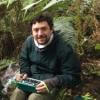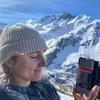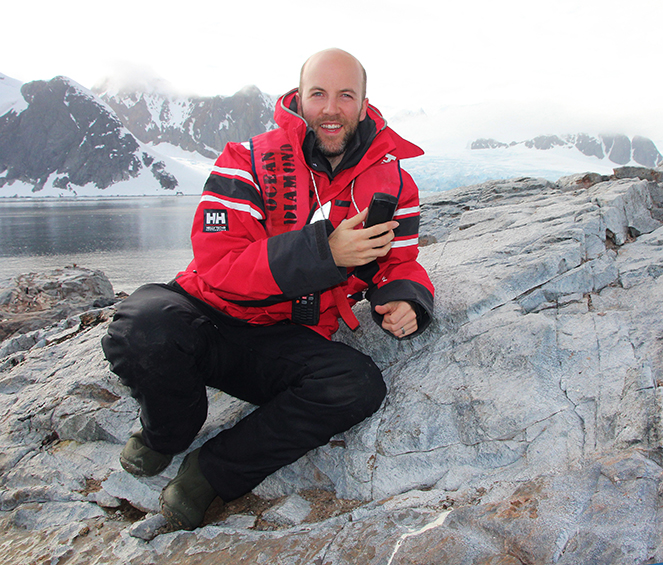Acoustic sensors enable efficient and non-invasive monitoring of a wide range of species, including many that are difficult to monitor in other ways. Although they were initially limited in application scope largely due to cost and hardware constraints, the development of low-cost, open-source models like the Audiomoth in recent years has increased access immensely and opened up new avenues of research. For example, some teams are using them to identify illicit human activities through the detection of associated sounds, like gunshots, vehicles, or chainsaws (e.g. OpenEars).
With this relatively novel dimension of wildlife monitoring rapidly advancing in both marine and terrestrial systems, it is crucial that we identify and share information about the utility and constraints of these sensors to inform efforts. A recent study identified advancements in hardware and machine learning applications, as well as early development of acoustic biodiversity indicators, as factors facilitating progress in the field. In terms of limitations, the authors highlight insufficient reference sound libraries, a lack of open-source audio processing tools, and a need for standardization of survey and analysis protocols. They also stress the importance of collaboration in moving forward, which is precisely what this group will aim to facilitate.
If you're new to acoustic monitoring and want to get up to speed on the basics, check out these beginner's resources and conversations from across the WILDLABS platform:
Three Resources for Beginners:
- Listening to Nature: The Emerging Field of Bioacoustics, Adam Welz
- Ecoacoustics and Biodiversity Monitoring, RSEC Journal
- Monitoring Ecosystems through Sound: The Present and Future of Passive Acoustics, Ella Browning and Rory Gibb
Three Forum Threads for Beginners:
- AudioMoth user guide | Tessa Rhinehart
- Audiomoth and Natterjack Monitoring (UK) | Stuart Newson
- Help with analysing bat recordings from Audiomoth | Carlos Abrahams
Three Tutorials for Beginners:
- "How do I perform automated recordings of bird assemblages?" | Carlos Abrahams, Tech Tutors
- "How do I scale up acoustic surveys with Audiomoths and automated processing?" | Tessa Rhinehart, Tech Tutors
- Acoustic Monitoring | David Watson, Ruby Lee, Andy Hill, and Dimitri Ponirakis, Virtual Meetups
Want to know more about acoustic monitoring and learn from experts in the WILDLABS community? Jump into the discussion in our Acoustic Monitoring group!
Header image: Carly Batist
I am a herpetologist interested in bioacoustics, evolution and conservation biology. Currently, I am a postdoc fellow at Universidade Federal de Santa Maria (UFSM), Brazil.
- 0 Resources
- 0 Discussions
- 5 Groups
- @Harsha
- | He/Him
I am a marine biologist / acoustic ecologist from Australia. Fascinated by bioacoustics, I always look forward to learning from people in conservation!
- 0 Resources
- 0 Discussions
- 11 Groups
Alberta Biodiversity Monitoring Institute (ABMI) & SENSR
We track changes in wildlife and their habitats in Alberta, working collaboratively to provide ongoing, relevant, scientifically credible information.


- 2 Resources
- 0 Discussions
- 4 Groups
- 0 Resources
- 3 Discussions
- 8 Groups
Holder of BSc in Applied Zoology. Assistant Ecologist at Ruaha National park.


- 0 Resources
- 7 Discussions
- 12 Groups
- @Martincho
- | tincho
Instituto de Ecorregiones Andinas (INECOA)
Postdoc at Instituto de Ecorregiones Andinas (INECOA - Jujuy National University - CONICET).
- 0 Resources
- 1 Discussions
- 2 Groups
University of Zurich
PhD student at the University of Zürich (CH) in PopEcol group, working with camera traps and mammals
- 0 Resources
- 0 Discussions
- 8 Groups
- @fsattar
- | Farook
Farook Sattar received his Technical Licentiate and PhD degrees from Lund University, Sweden. He obtained his B.Eng and M.Eng degrees from Bangladesh University of Engineering & Technology (BUET), Dhaka in Electrical and Electronics Engineering.
- 0 Resources
- 0 Discussions
- 2 Groups
- @sarah_dalrymple
- | she/her
Royal Society for the Protection of Birds (RSPB)

- 0 Resources
- 9 Discussions
- 3 Groups
- 0 Resources
- 2 Discussions
- 3 Groups
- @PhilAtkin
- | He/Him
Embedded software developer of 40+ years experience, hardware designer.



- 3 Resources
- 22 Discussions
- 6 Groups
British Trust for Ornithology (BTO)
- 0 Resources
- 10 Discussions
- 1 Groups
Careers
Island Conservation's Innovation Team is dedicated to developing innovative, data-driven tools to increase the scale, scope, and pace of island restorations around the world. As the Conservation Innovation Manager, you...
27 September 2023
If only there was a place where these users, manufacturers, and supporters of conservation technology could connect with one another. There is. It is called WILDLABS.
22 September 2023
The new white paper from Rainforest Connection (RFCx) explores the power of ecoacoustics and AI to monitor biodiversity and track progress towards GBF targets using case studies from around the world.
20 September 2023
Article
Five #tech4wildlife people, projects and updates that caught our attention this month. An AI supported bear early warning system, a project that's connecting indigenous communities with high speed internet, exploring...
12 September 2023
It's relatively easy to collect vast amounts of audio data - it's not so easy to analyse it and get consistent results. The Wilder Sensing platform enables users to upload vast quantities of audio which is then analysed...
1 September 2023
News about a population survey of California Spotted Owls using 1,600 autonomous recording units in the Sierra Nevada region. Machine learning made analyzing this acoustic data possible at this large scale for the first...
29 August 2023
The Smithsonian Institution seeks a field- and data-oriented biologist to support marine animal telemetry research and to assist with activities of the Atlantic Cooperative Telemetry (ACT) Network.
24 August 2023
Apply to work on a wonderful team translating acoustic monitoring data into conservation & ecological insights!
11 August 2023
This article discusses Cornell's bioacoustics work with AI tools to recognize both elephant "voices" as well as gunshots. The elephant rumbles analyzed in this work are almost imperceptible to the human ear, but can be...
9 August 2023
Please join us in celebrating this year’s top #Tech4Wildlife Photo Challenge Honorees as chosen by our panel of leading conservation organization judges, and enjoy the story contained within these entries about how our...
4 August 2023
Exciting opportunity for an experienced biodiversity monitoring expert in ZSL's conservation department
18 July 2023
Global methane data and new functionaity on the Carbon Mapper Data Portal
12 July 2023
June 2025
July 2025
September 2025
event
October 2025
November 2025
event
March 2024
event
February 2024
61 Products
| Description | Activity | Replies | Groups | Updated |
|---|---|---|---|---|
| If you search Digikey for a 'strain relief' you should be able to find a rubber grommet that will hold that mic without any additional machining. A blob of silicone will adhesive... |
|
Acoustics | 11 months 4 weeks ago | |
| Thanks Carly! I had reviewed some of the help files, but clearly not the right ones!My email is deanc5697@my.uwstout.edu |
|
Acoustics, Software Development | 11 months 4 weeks ago | |
| Hi Tabitha, What recording settings were you using when you saw these differences? I've measured the consumption across some different firmware versions and I can't see any... |
+10
|
Acoustics | 1 year ago | |
| Hello!Long time, no update. @StephODonnell suggested I post here with my thesis and some reflections. ---------------------------------------------------------TL;DR... |
+19
|
Acoustics | 1 year ago | |
| Hi Jesse,For a material to be acoustically transparent (in air), the speed of sound in the material times its density must match that of air. Realistically, any solid... |
+1
|
Acoustics, Animal Movement | 1 year ago | |
| Hi Steph, We appreciate the support! Thanks for the tag and your help managing the community!Patrick |
|
Sensors, Acoustics, Conservation Dogs, Emerging Tech, Open Source Solutions | 1 year ago | |
| Hi Sol,If the maximum depth is 30m, it would be worth experimenting with HydroMoth in this application especially if the deployment time is short. As Matt says, the air-filed case... |
|
Acoustics, AI for Conservation, Data management and processing tools, Emerging Tech, Sustainable Fishing Challenges | 1 year ago | |
| Oh wow, thank you so much!!!I will keep that four advices in mind! |
|
Acoustics | 1 year ago | |
| You won't get any audio if you don't allow enough time for the hydromoth/audiomoth to write. So when you do a continuous recording you need to experiment a little. I'm sure there... |
+3
|
Acoustics | 1 year ago | |
| Congratulations! My first hydromoth was just arrived yesterday and so excited! Looking forward for the update from your project!!! |
|
Acoustics, Animal Movement, Climate Change, Conservation Tech Training and Education, Data management and processing tools, Emerging Tech, Open Source Solutions, Protected Area Management Tools, Sensors, Software Development, Latin America Community | 1 year ago | |
| If you have the resources, I would suggest testing the sensitivity and directionality of the system at relevant frequencies both with and without an external mic, and let the... |
|
Acoustics | 1 year ago | |
| Totally agree.Inititally sceptical until I saw Helena and Graeme were involved.MJ |
|
Acoustics, Citizen Science, Community Base, Human-Wildlife Conflict | 1 year 1 month ago |
SODA Suite -An endeavour to assimilate global soundscapes on a cloud platform.
2 February 2019 6:09am
Getting up close and personal with Antarctica's orcas
4 February 2019 12:00am
Avisona 2019: Workshop on Bird Call Recording and Analysis
24 January 2019 12:00am
Recording problems with Audiomoths
30 December 2018 9:57am
2 January 2019 3:00am
Hi David
Thank you for your answer. I'm using 2000mAh Fujitsu R06 batteries. When configuring the AudioMoths, daily energy consumption is said to be 72mAh. The batteries should last for at least 20 days. I've never had them deployed for more than seven days straight (and they even did the zero lenght files at deployment for only three days). Maybe the energy consumption calculator in the configuration program is faulty?
Where can I find the firmware?
Alex
2 January 2019 7:49am
Information and links to the new firmware and the app is here https://www.openacousticdevices.info/single-post/2018/12/12/Version-120---New-Firmware-and-Config-App-Now-Available. Note: there is a possiblilty of the update failing and the recovery proceedure is here https://www.openacousticdevices.info/support/device-support/device-bricked-during-firmware-update.
With batteries it is also to do with voltage decay as well as power. There was a discussion Nov 2017 about voltage limits and it was said that SD cards get a bit twitchy at less than 3.3v but the rest will still be operating at around 3v - I can't find any data on R06 however in general voltage drop is influenced by temperature, dicharge rate, age/no of recharges etc etc - your are right it may not the batteries but there is a possibility it might hence my suggestion.
I'd suggest also posting on the AudioMoth support forum, to see if anyone else has seen this issue and has a fix.
Cheers
David B
2 January 2019 10:01am
Forgot to say - if you are having trouble reformatting SDcards on Windows- the project suggests this programme http://www.ridgecrop.demon.co.uk/index.htm?guiformat.htm.
Machine learning to detect fish bomb blasts
20 December 2018 1:16pm
3D printed audiomoth cases
18 December 2018 10:14am
Introductory online training videos in bioacoustic analysis using Raven
5 December 2018 10:43am
Monitoring Ecosystems through Sound: The Present and Future of Passive Acoustics
 Ella Browning
and 1 more
Ella Browning
and 1 more
4 December 2018 12:00am
AudioMoth is now available on LabMaker
5 September 2018 5:17pm
How to share data on species to help conserve them… whilst avoiding them being exploited by poachers
20 August 2018 12:00am
Ocean Hack: San Francisco, 10-11th September, 2018
 One Ocean Collab
One Ocean Collab
20 August 2018 12:00am
AudioMoth group purchase (round 5) is open now.
26 July 2018 3:43pm
7 August 2018 4:00pm
I love seeing how much this little device has taken off!
The 2018 Ecoacoustics Congress Wrap-up
25 July 2018 12:00am
Audiomoth Group Purchase (Round 3)
5 February 2018 12:02pm
11 April 2018 5:26pm
Hi all,
Do to the success of Round 3 (hitting its target 15 days early and reaching the stock limit) we have started to explore the possibility of launching a 4th round, with a shorter time frame (probably 15 days) and with a limit of 250 devices. This will all come down to component stock, and finding it, so we'll update you next week (16th April) once we have confirmed it's possible.
Kind regards,
Alasdair
23 April 2018 5:36pm
Quick update from @alasdair - 'The 4th round of AudioMoth will go live Mon 30th April and there will be 250 made available. This has been made possible as we need to manufacture all those from round 3 and 4 at the same time whilst we await a stock re-order of a component.'
Alasdair has promised to post the time it goes live as it's bound to fill up quickly, given how fast the third round sold out. Stay tuned!
23 April 2018 5:53pm
Hi Stephanie, thanks for the update above. We will be doing two things this week to support the community. To meet the demand from Round 3 we require an essential component (MOSFET) and so we are planning to;
1) contact the 110 backers from this round (3) to ascertain how many have field trip deadlines and work with CircuitHub, the manufacturer, to see what's possible to meet deadlines - i.e identifiying other stockists of the missing component, or possibly an advanced run with the stock available now for those with an urgent deadline.
2) Launching a 4th Round on Monday 30th April with 250 devices available. This will have a shorter run time of 14 days and is possible as it will end shortly before the delivery of the stock needed to complete orders from both round 3 and 4, allowing us to help those who couldn't get in to round 3.
All the best,
Alasdair | Arribada Initiative
Conservation Technology User Guidelines Issue 4: Satellite remote sensing for conservation
23 April 2018 12:00am
Listening to the Forest: WWF Fuller Seminar
27 March 2018 8:28pm
#Tech4Wildlife Photo Challenge 2018: Our Top 10
3 March 2018 12:00am
Group purchasing of the AudioMoth (Round 2) is now live
7 December 2017 2:07pm
5 February 2018 11:36am
Hi everyone, we have received an update from GroupGets on the shipping of the second group purchase.
'Quick update everyone. The boards are scheduled to ship to us from Circuit Hub on Feb 12. We will promptly ship out once we have them. The lead-time slipped due to the large amount of orders. Thanks for being patient!'
For those with small orders, your order will come to us at Arribada first and we will ship out from here. This greatly reduces the import taxes to you but will mean a small wait.
By taking part in this group purchase you have hugely reduced the cost per device for everyone involved. Thanks so much for your patience.
Technology Empowered Conservation Lecture Series
18 January 2018 12:00am
Bird Bioacoustics
16 October 2017 1:23pm
10 January 2018 2:44am
Hi Carlos and others working on bird bioacoustics,
@SteffenOppel flagged a new issue of Avian Conservation and Ecology that might be of interest as it nicely intersects with what you were looking at in your workshop and follow up survey. This issue is about Advancing bird population monitoring with acoustic recording technologies, and is available here.
Presumably you've closed the survey now, did you get useful feedback from it that complements the information collected from delegates? What are your next steps for this work?
Cheers,
Steph

11 January 2018 10:02am
Thanks for that Steph - and for the link in included. A good set of papers there, and the review by Shonfield & Bayne on 'current use and future application' is really useful.
The SurveyMonkey should still be open for people to add to - and some good additional feedback has already been gained on my initial proposals for a survey protocol. The next step for me is get this written up and published in CIEEMs In Practice in the next couple of months.
All the best, Carlos
Group purchase of the AudioMoth from Open Acoustic Devices imminent
16 April 2017 1:32am
5 December 2017 10:01am
HI Alasdair,
pardon me if this is irrelevant, do you know any device which we can use to record low frequencies like sounds of elephants etc? I don't think AudioMoth is capable. I'm just trying to find such a device/technology.
kind regards!
Nilaksha
6 December 2017 6:55pm
Hi everyone,
Good news! The second group purchase is going live this week. We've been preparing things with GroupGets to get it live, so I'll post the link to the campaign for those who want to get their hands on a device. I may start a new thread for the second round as this one is getting a tad long.
@nilaksha - do you have a specific frequency range you'd like to target in regards to your elephant research? The AudioMoth may already be capable if you can let us know your target.
6 December 2017 8:15pm
Good news indeed, Al! I think a new thread is definitely a good idea - this one is getting rather unwieldy.
@nilaksha, you might check out @Jan+Kees 's serval sensor thread as well, as he's working on elephant recordings so it could be of interest. It's over here.
Cheers,
Steph
Acoustics for Human-Wildlife Conflict Prevention, Anti-poaching, and more
27 April 2017 5:28pm
2 November 2017 2:20pm
Hi Chris,
thx for sharing your ideas. We indeed cracked the problem of recognitizing sound types and to deploy a trained convolutional network model on a RPi. The information we process includes dB-levels per audio band, thus, yes, that is also possible on a RPi.
The current version of the sensor can 'talk' LoRa and GPRS, but that was the easy part. If necessary, we can install a local LoRa-network. We have our own one running around our office.
Power consumption is the actually the limiting factor in terms of for which problems you can or cannot apply the SERVAL technology. We are developing it to mitigate HWC-situations, as these are by definition within the zone between nature and culturalized land. Power is less of a problem in these zone, because we can detect elephant rumbles and tiger roars on several km's distance.
Thus, the sensor is ready, but the data processing and learning is not. At this moment we are searching for funds or volunteers to help us process the recordings. Once that work is completed, we are ready for the field ;-)
2 November 2017 4:16pm
sign me up as a volunteer!
:-]
Being a Cornell grad, I have a Raven Pro license.
agreed, power is everything. Again, with the GPU-accelerated FFTs, is it perhaps possible to run the algorithms on an RPI A, or perhaps even a Zero? Or is this done via Raven batch mode?
I'm quite interested to acoustically detecting human activity in general; i.e. trucks, motorcycles, gunshots, chainsaws, and with hydrophones, motorboats, but also collect/harvest vast amounts of data in super-remote places for TEAM, as per: http://www.teamnetwork.org/about , and generally target the SMART folks of: http://smartconservationtools.org/smart-partnership/ I'll be at the World Bank in a few weeks for: http://conferences.iaia.org/wdc2017/ , with the goal being to find a sponser to pilot this sort of thing for biodiversity monitoring.
(and while we're burning power, perhaps discriminating bipeds vs quadrupeds visually, as per: https://github.com/wzyuliyang/RaspberryHOG, https://www.pyimagesearch.com/2015/11/09/pedestrian-detection-opencv/ ..?)
Anyway, extremely good to find you.
How can I participate?
Chris
2 November 2017 5:03pm
Great. Let's continue our discussion that through Skype ;-) My skype name is jkschakel and you can email me at jankees.schakel@sensingclues.com.
I'm available on Tuesday or Wednessday night (Amsterdam time) or Thursday. Could you please send me an email with your skype name and some cv or whatever for me to orientate?
To answer your other questions:
- Yes, we do use Raven (light) to extract the sound samples.
- No, we don't use raven on the RPi, and because it has to analyse sounds in realtime, the Zero is (currently) not powerful enough.
- crunshing and analysing the numbers is done on the RPi, but we bypass visualisation. The output is a numerical class (representing e.g. chainsaw, elephant at circa 1000m, etc) which is transmitted to the rangers.
- We certainly share our interests - let's see how we can join forces. We have cracked the techno aspects and know how to create the model, but have not yet found a sponsor to fund that labour. Help in terms of funds or hands-on time is highly appreciated!
HWC Tech Challenge Update: Meet the Judges
20 October 2017 12:00am
Imagery request
6 March 2017 11:55am
7 March 2017 11:09am
Amazing, thanks Arik!
15 March 2017 4:27pm
Hey Paul,
Emma and Paige have also given the go ahead to use their photos, they also have some other photos you might be able to use!
@WILDLABSNET Absolutely, I'd be more than happy to help. I've got lots of photographs from my acoustic monitoring projects. Thanks!
— Emma Checkley (@EmmaCheckley11) March 8, 2017
@WILDLABSNET Yeah, I've definitely got some of those lying around!
— Paige A. Byerly (@paigebyerly) March 8, 2017
16 October 2017 1:18pm
Paul,
Hi - is this still needed, as I'm sure we could provide something relating to birds, bats and cetaceans?
Thanks, Carlos
New R package: 'soundecology'
7 February 2017 3:17pm
16 October 2017 12:51pm
Steffen,
Thanks for that tip-off, I'd not seen that paper before. One of the speakers at my bird bioacoustics meeting in July covered soundscape ecology, with some interesting data comparisons of the different metrics. His presentation is on our website if you would like a copy?
Also, I've just emailed Danile Hayhow about the work on capercaillie I've been doing in 2016 & 2017- recording lekking calls to see if an activity index compares with standard survey methods. I'd be very keen to talk this over with yourselves at the RSPB in preparing the journal publication, as it will incorporate the survey data from 2017 collected by RSPB Scotland staff.
Thanks, Carlos
Download New Conservation Tech Guidelines: Camera Traps, Acoustics and LiDAR
11 October 2017 12:00am
Describe Your Work in Six Words
13 September 2017 5:40pm
Elephant communication translation
14 August 2017 2:30pm
6 September 2017 10:47pm
Wow, this would be amazing to continue on with the years of data I have from tigers! I understand their social lives are very different but it would be interesting to see what other species could be highlighted on a platform like this.
Trialing Audiomoth to detect the hidden threats under the canopies of Belize
 Andrew Hill
and 1 more
Andrew Hill
and 1 more
27 June 2017 12:00am
Product Grant Program for Wildlife Acoustics hardware & software
12 June 2017 7:35pm






































































4 February 2019 4:01pm
Thanks! We also just posted info on the AVISONA 2019 event to the resources page for anyone who missed it and wants to learn more.